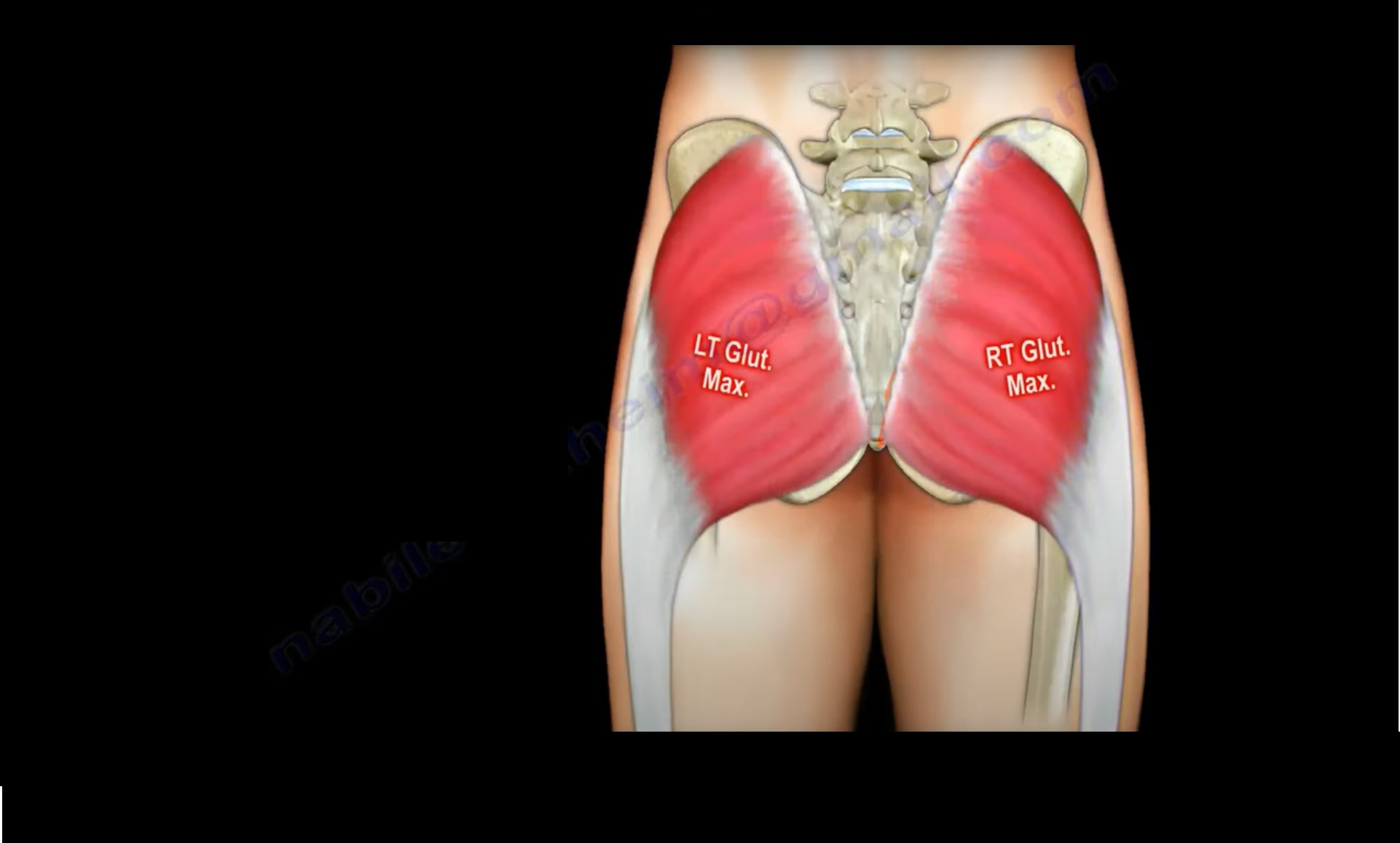Courtesy: Prof Nabil Ebraheim, University of Toledo, Ohio, USA
GLUTEUS MAXIMUS
Gluteus maximus is the largest and heaviest muscle in the body. It is the most superficial of all gluteal muscles that are located at the posterior aspect of hip joint.
ORIGIN:
The gluteus maximus originates from
The gluteal surface of ilium
Lumbar fascia
Sacrum
Sacrotuberous ligament.
COURSE:
Fibres of the gluteus maximus run downwards and laterally.
INSERTION:
The lower quarter of the muscle inserts onto the gluteal tuberosity of femur.
The upper and larger portion of the muscle inserts on to the iliotibial band of fascia lata which passes across greater trochanter.
ARTERIAL SUPPLY;
The gluteus maximus muscle is supplied by the superior gluteal artery and the inferior gluteal artery which originates from the internal iliac artery.
NERVE SUPPLY:
The innervation is from the inferior gluteal nerve which originates from the ventral rami of L5, S1 and S2.
FUNCTION :
The principal function is to extend, externally rotate and abduct the hip. Situations like rising from sitting, straightening from bending position, walking upstairs or on a hill and while running are the ones in which the muscle acts. It also supports the trunk when a person stands , by acting on the pelvis.
EXAMINATION Of THE FUNCTION OF GLUTEUS MAXIMUS.
Keep the leg in vertical position and create a downward pressure over the thigh with the patient in prone position. If the patient is able to resist this downward pressure, it indicates that the gluteus maximus is intact.
EXERCISES FOR STRENGTHENING THE GLUTEUS MAXIMUS.
Lunge : strengthens the gluteal muscles, hamstrings and the quadriceps muscles.
By putting on ankle weights.
Using stability balls.
GLUTEUS MAXIMUS GAIT:
When the gluteus maximus muscle is weak, the trunk lurches backwards (extension of the trunk). It occurs at heel strike on the weekened side to interrupt the forward motion of the trunk. This compensates for weakness of hip extension.
PATHOLOGICAL PROBLEMS:
Duchenne muscular dystrophy.
Due to weakness of the quadriceps and the gluteal muscles, the patient has to use his hands and arms to walk up his body in order to achieve an erect posture which is described as Gower’s sign. The first muscle group displaying weakness is the gluteus maximus with more weakness in the proximal muscles (the quadriceps, hip abductors) than the distal.

Leave a Reply